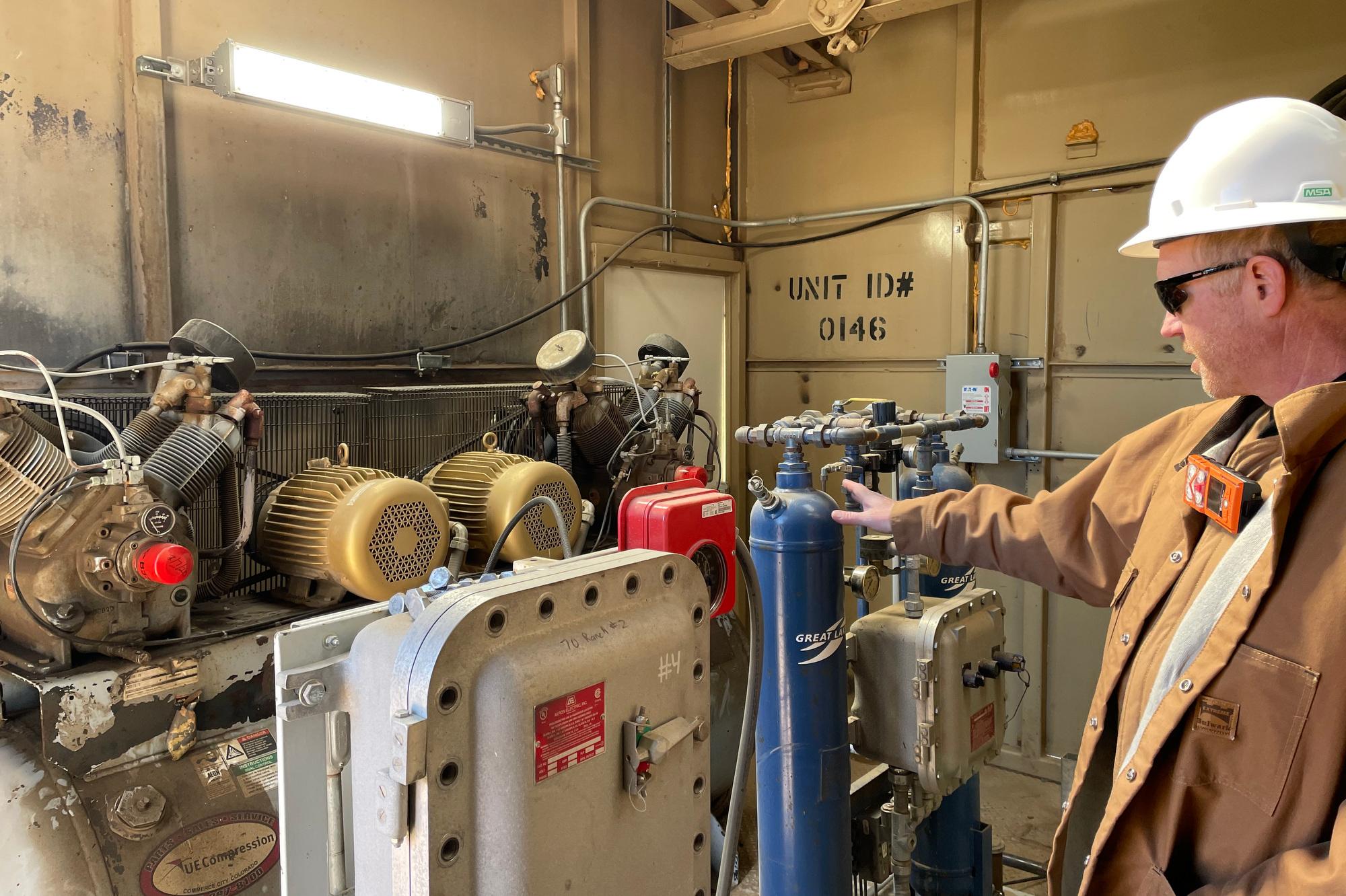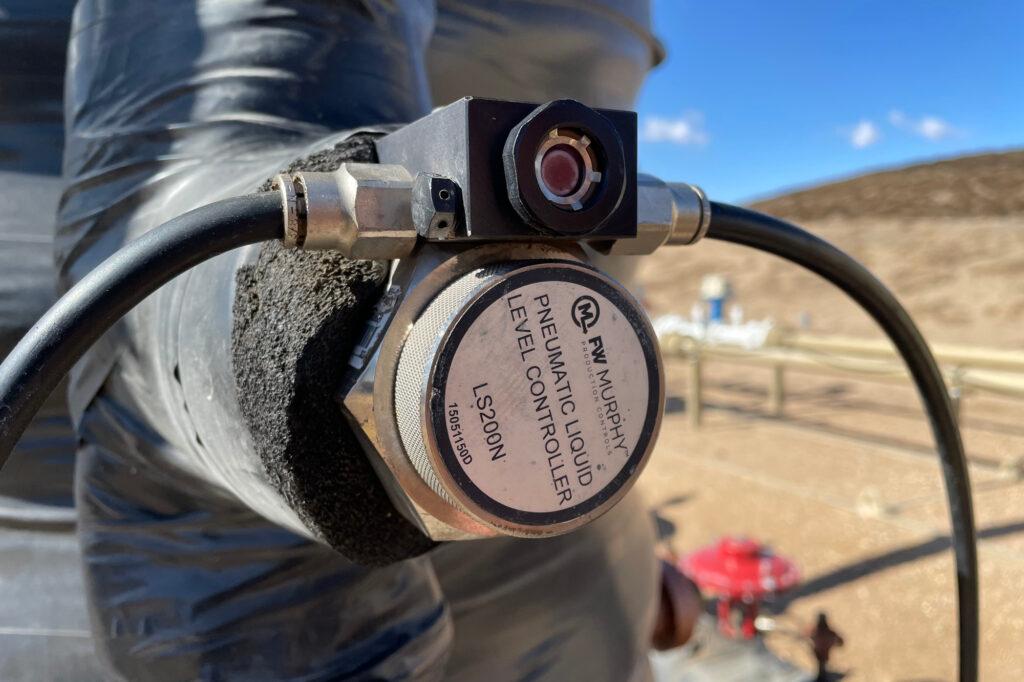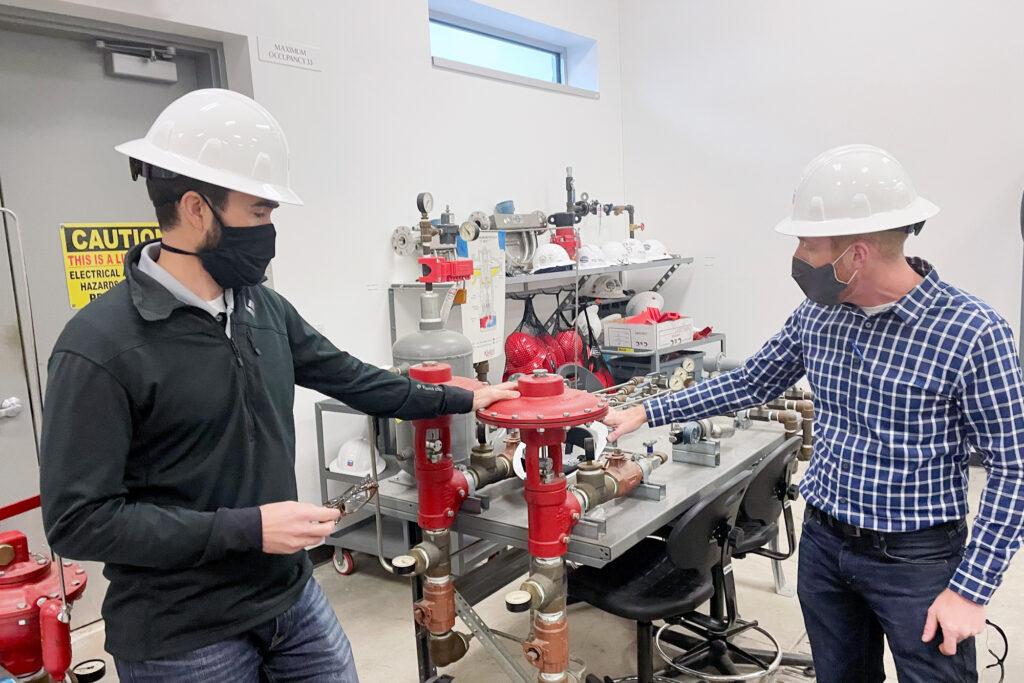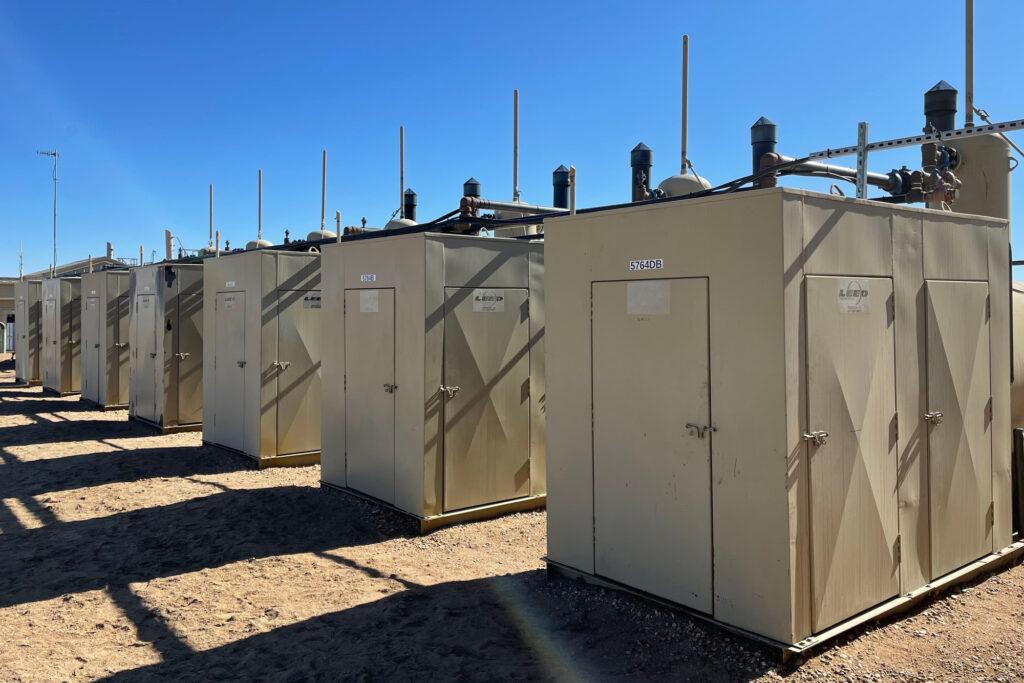
Rusty Frishmuth opened a metal equipment cabinet in an oil field east of Greeley and waited for the sound.
A few minutes later, a sharp woosh blew from inside. It was the sound of a pneumatic controller in action.
“Incredibly exciting, right?” joked Frishmuth.
As the director of environmental health and safety for HighPoint Resources, which drills across the Denver-Julesburg Basin, he’s used to hearing these little devices throughout the day.
Pneumatic controllers monitor temperature and liquid levels in thousands of oil fields across Colorado and other energy states. The controllers are often powered by the pressurized natural gas produced on-site but can also run on cleaner sources of energy, such as compressed air and electricity.

The little bursts of natural gas may not seem like much, but researchers and environmental groups say they add up. Pneumatic controllers were responsible for more than a fifth of reported onshore drilling emissions in 2019, according to the Environmental Protection Agency.
Those emissions caught the Colorado Air Quality Control Commission's attention, which last month approved a proposal from environmental groups and industry leaders to more strictly regulate the controllers.
Starting May 1, oil and gas companies operating in Colorado will have to use non-emitting controllers in new facilities, according to the new rule. Companies will also have to replace controllers that run on natural gas at existing facilities with non-emitting controllers over the next two years.
Commissioners said this makes Colorado the first state in the country to require companies to replace the devices.
“To have a consensus agreement is amazing,” Commissioner Chuck Grobe said of the proposal last month.
Robin Cooley, a staff attorney for EarthJustice who worked on the regulation, said targeting controllers is vital for the state to chip away at its greenhouse gas reduction goals.

“It's significant because pneumatics are such a large source of methane emissions from this industry,” Cooley said. “This is a step in the right direction, but there's definitely going to be more that needs to be done to meet those targets in the future.”
The state has set other restrictions on pneumatic controllers in recent years. HighPoint Resources now installs air compressors in newer facilities to power the controllers.
“Anything that we've built in the last two years or so, we put an air system in,” Frishmuth said.
Larger corporations like Chevron are doing the same. The oil and gas giant has installed non-emitting controllers in new and consolidated facilities since 2019. This has helped the company retain more natural gas that would otherwise be released into the atmosphere, said Justin Carter, the training coordinator for Chevron’s Rocky Mountain division in Greeley.
“We don’t release a ton of gas with our pneumatic devices, but there’s no harm in being more efficient and keeping it in the pipes,” Carter said.
The new regulation gives companies the flexibility to power the controllers with any other non-emitting source of energy, such as electricity or compressed air. To target the largest emitters, the rules require companies that primarily use pneumatic controllers to replace more of them over time.

Companies will have to submit a plan for how many controllers they will replace later this year. They will then have to report back on their progress over the next two years.
Frishmuth said he doesn’t believe pneumatic controllers are a major source of emissions. It’s difficult to measure, he said, considering that there are different types of controllers monitoring other processes.
“I don't know that given everything that everybody is doing in trying to reduce emissions, that you're going to be able to pinpoint and say, ‘Oh, yeah, here's a very big decline because we went in and retrofitted pneumatic controllers,’” he said.
Yet, he supports the regulation if it cuts down on emissions and allows facilities to continue producing.
“I've never viewed it as a huge source of emissions compared to other things we have out here,” he said. “But it is a source of emissions, so let's go do something about it.”








